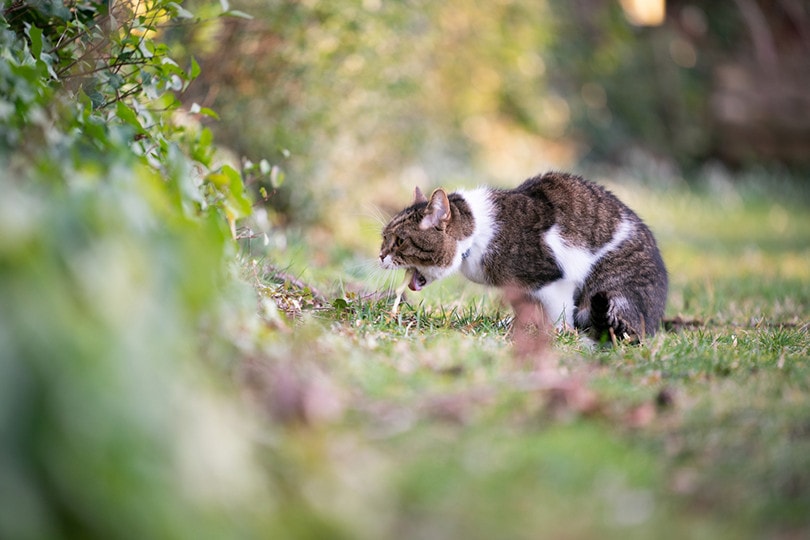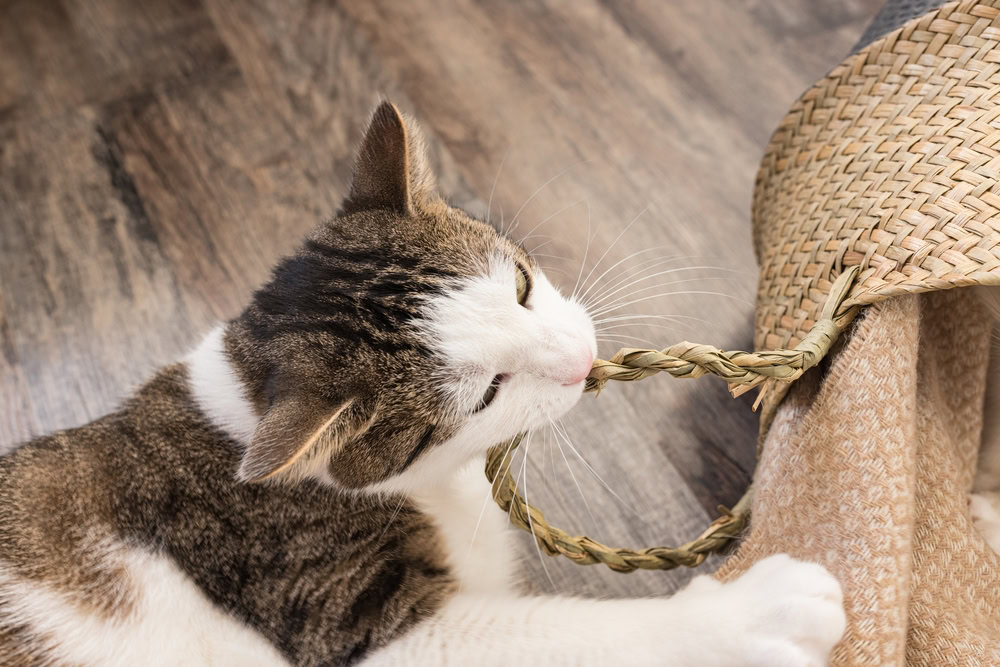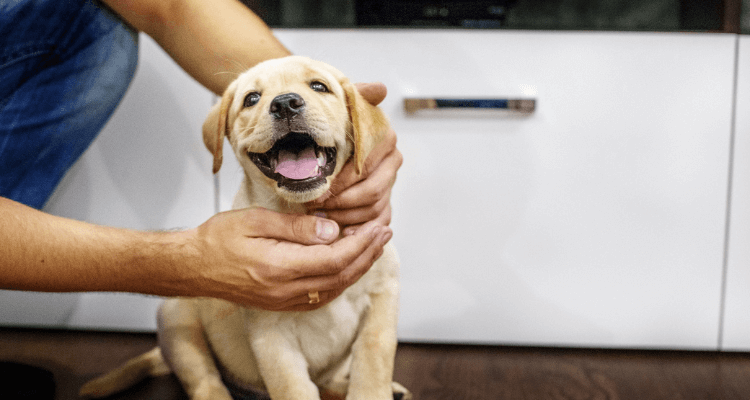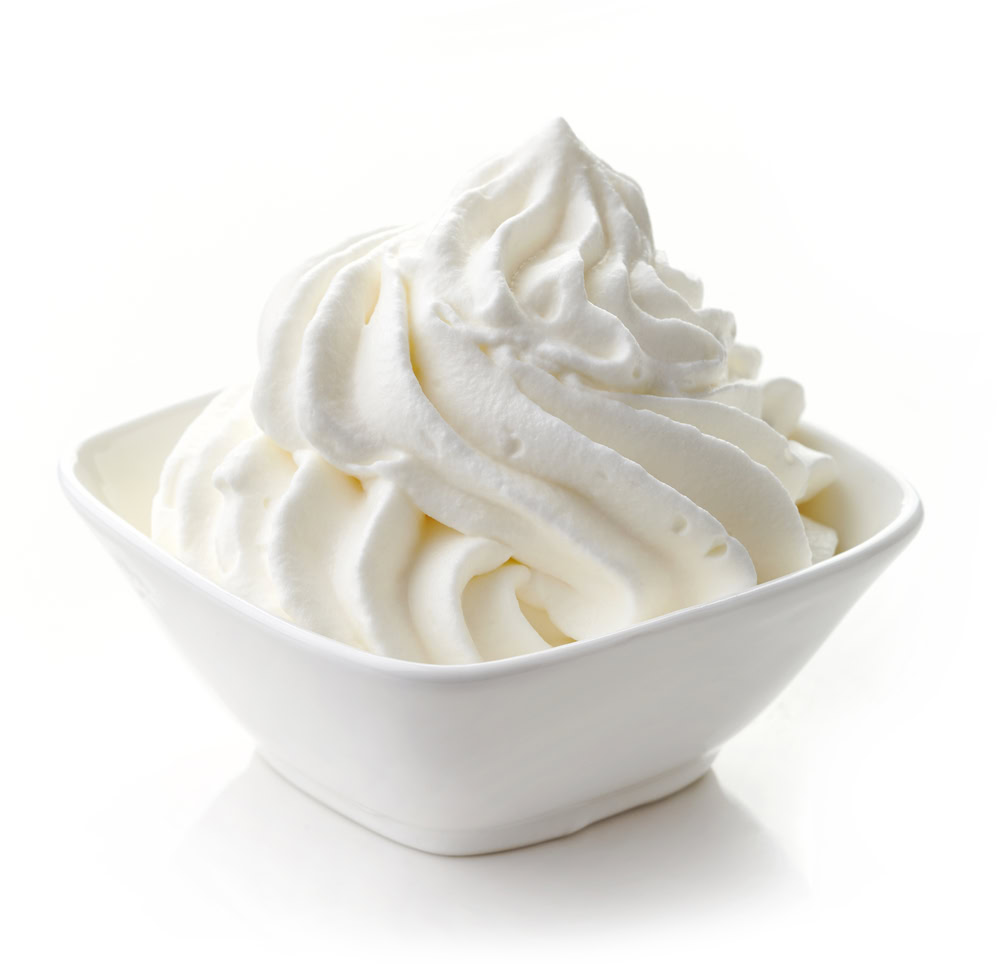It’s not uncommon for dogs to find themselves at the vet’s office after eating something they shouldn’t, but even cats will occasionally swallow things like string or twine, which can land themselves on the operating table. For some animals, ingesting non-food items like fabric or cardboard becomes a regular habit; this is called pica.
Pica can range from being a relatively harmless habit to a dangerous compulsion, so it is important to understand why it is happening and what to do about it. There are a number of different factors that may contribute to a cat developing pica, so we need to look at what they are eating and why they are doing so in order to find a solution.

What Is Pica?
Pica refers to the habitual ingestion of non-nutritive, non-food items. In humans, it is usually linked to a mental health condition or an eating disorder, but in pets, pica is usually the reflection of a nutritional imbalance, health condition, displaced behavior, or stress. The ingestion of dirt or other environmental materials is relatively well recognized in livestock, and even dogs, seeking to correct a mineral deficiency. For cats, pica is usually restricted to items like fabric or wool, but it can also include plastic, rubber, paper, cardboard, plants, string, and soil.
The challenge with addressing pica in cats is that there are believed to be a number of distinct underlying causes for the condition, which often influences what sort of material is being targeted. Additionally, pica in cats can also be separated into chewing, sucking, and ingesting, with the latter being the less common of the three.
Chewing
Cats have been known to shred kitchen sponges, decimate house plants, and turn cardboard boxes into confetti. Sometimes only the results are seen, like tell-tale teeth marks in plastic or wood. Far from being a way to supplement their diet, this sort of destructive behavior is more likely to be an indication of boredom, frustration, or stress.

Sucking
This form of pica is most often seen in younger cats, and based on the limited research that exists, it is also the most common. Soft materials like wool and fabric are the usual targets, and the behavior is generally agreed to be a displaced suckling action. Studies suggest that this form of pica is most common in kittens around the age of 6 months and tends to disappear as they get older.1 It was found to be associated with environmental disturbances, such as moving house, but rarely required any significant intervention.
Ingesting
In cats, pica behavior where the material is actually ingested is quite rare. Although eating plant material is sometimes classified as pica, there is usually a physiological reason for cats to eat plants. Certain medical conditions, particularly gastrointestinal disorders, have been linked to pica in cats, but to date, this is a poorly researched subject.
However, there are some cases where cats will ingest plant material, including flowers and stems, which appear to be more behavioral rather than nutritional.
The eating of other foreign items like twine, wool, or fabric is more likely to be incidental to play or sucking, rather than being a deliberate ingestion of the material.

What Are the Signs of Pica in Cats?
The most notable sign is the chewing, sucking, or ingesting behavior itself, although there are some other things you should look out for as well. Common signs of pica in cats include:
- Diarrhea
- Vomiting
- Lack of appetite or thirst
- Lethargy
- Constipation or straining to defecate
- Abdominal discomfort

What Causes Pica in Cats?
As indicated above, a number of different reasons for pica in cats have been proposed:
Therapeutic
Chewing and swallowing foreign material has been observed in cats with dental problems, as well as cats who are suffering from gastrointestinal disorders like inflammatory bowel disease. Although there are many reasons why cats will eat plants, gastrointestinal issues are one of the more common ones, and ingesting grass can induce vomiting or help settle the gut.
Ironically, some cats will also chew and swallow material to help dislodge an existing obstruction like a trichobezoar (hairball). This may help shift the obstruction or potentially worsen the situation!
Cats with chronic pain or inflammatory conditions may also chew objects as a form of distraction or self-soothing.
Behavioral
Pica in kittens often involves sucking on soft materials in a way that mimics suckling their mother, usually accompanied by the classic kneading action that helps stimulate milk flow when feeding. This may be linked to premature weaning or stress from environmental factors, or it may just be a residual behavior. In most cases, this sucking behavior tends to diminish as the cat gets older, but some adults will still engage in it as a form of self-soothing.
Rarely, some cats may engage in sucking as a compulsive behavior, which is most likely linked to a chronic pain or stress situation. Cats that persist with pica beyond the age of 12 months should be examined by a vet.

Nutritional
This is not as common in cats, but sometimes, pica may be used to address nutritional imbalances in the diet, such as mineral deficiencies or the need for fiber.
Symptomatic
Medical conditions or diseases that cause an increased appetite may extend to eating non-food items. Polyphagia (excessive eating) is one of the major clinical signs of hyperthyroidism in older cats, and intestinal worms will often lead to polyphagia as the parasites absorb nutrients from the body.

How Is Pica in Cats Diagnosed?
If you notice any signs of pica, make sure you reach out to your vet right to rule out any other medical conditions first. Your vet will likely perform screenings like blood tests, urine tests, or stool examinations and look over their health history. However, there is no specific diagnostic test for pica specifically, so the vet will look at several factors before making a diagnosis.

How Do I Care for a Cat With Pica?
If your cat is chewing, sucking, or eating something they shouldn’t, the best thing to do is talk to your vet. In most instances, pica can be a relatively harmless behavior, but it can signify or lead to some serious health issues. Even cats that are just sucking wool or fabric can end up accumulating fibers in their intestines, which can cause blockages.
The main risks associated with pica in cats are intestinal obstruction, ingestion of harmful or toxic substances, and damage to teeth by chewing hard material. If your kitten is occasionally sucking on a washcloth, toy, or blanket, it’s unlikely to cause any issues, and they will likely grow out of it. Keep a close eye on them to make sure they aren’t sucking on things with loose fibers that can break off and be swallowed.
A few other things to consider include the following:
- Make sure you are feeding your cat a high-quality, nutritionally balanced diet.
- Check their stool quality, as large, loose poop or diarrhea can indicate a poor-quality diet or an absorption problem.
- Monitor their appetite. A ravenous appetite can be an indication of disease, parasitism, or an insufficient amount or quality of food.
- Ensure your cat has a stress-free, calm environment by providing them with plenty of hiding places, high shelves, or cat trees, and consider using pheromone diffusers or calming sprays to help them feel more at ease. Diffusers that use artificial pheromones that mimic those produced by a nursing mother can be particularly useful with kittens that are engaging in suckling behavior.

Frequently Asked Questions (FAQ)
What Are Common Things That Cats With Pica Eat?
A cat with pica might put various things in their mouth, including cardboard, plastic, paper, wool, plaster, soil, string, rubber, or more.

Is Pica Curable?
Pica in cats can be cured if the underlying cause of the behavior is identified and treated. Treatment could include dietary changes, medications, environmental enrichment, or surgery.
Is Pica Dangerous?
It can be, especially if dangerous items like rubber or plastic are consumed and lead to a gastrointestinal obstruction. However, this isn’t always the case.

Final Thoughts
Pica in cats is not overly common and is usually associated with young cats finding comfort in sucking on soft materials, mimicking suckling their mother. The type of pica (ingesting, chewing, sucking) can provide insight into the underlying reason, as can the type of material in question. Ingesting foreign objects and materials is more likely to indicate a health issue, as well as potentially cause them, so you should always seek urgent veterinary advice for these cats.
Chewing and sucking may be linked to stress, boredom, anxiety, or chronic pain, so it is important to identify what may be influencing your cat’s oral fixation. From there, you can address any problems, whether that be helping them feel more safe and secure, spending more time with them to alleviate boredom, or seeking veterinary help for possible underlying pain or illness.
Featured Image Credit: lermont51, Shutterstock



